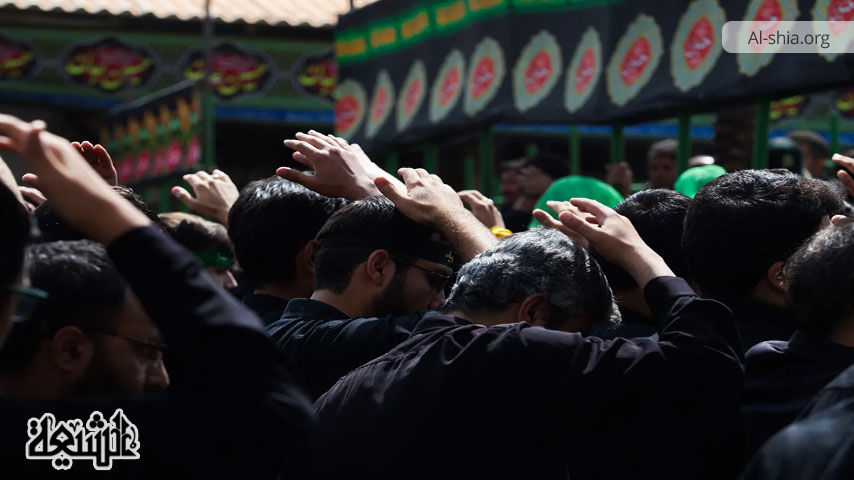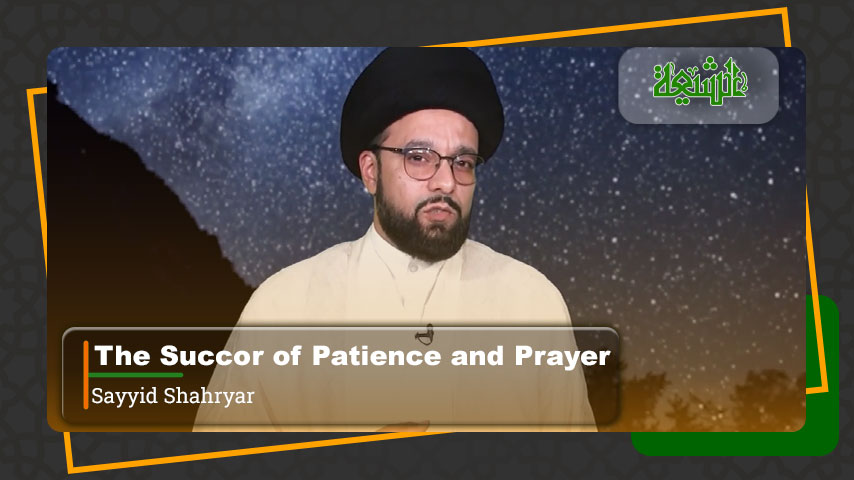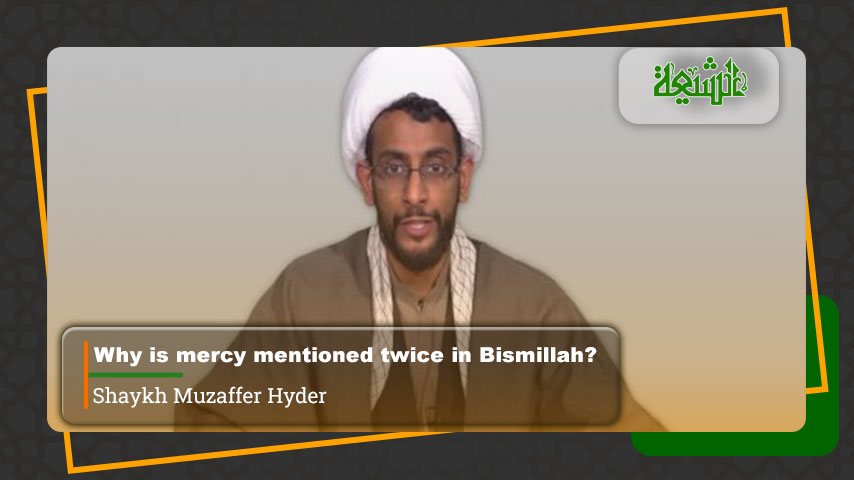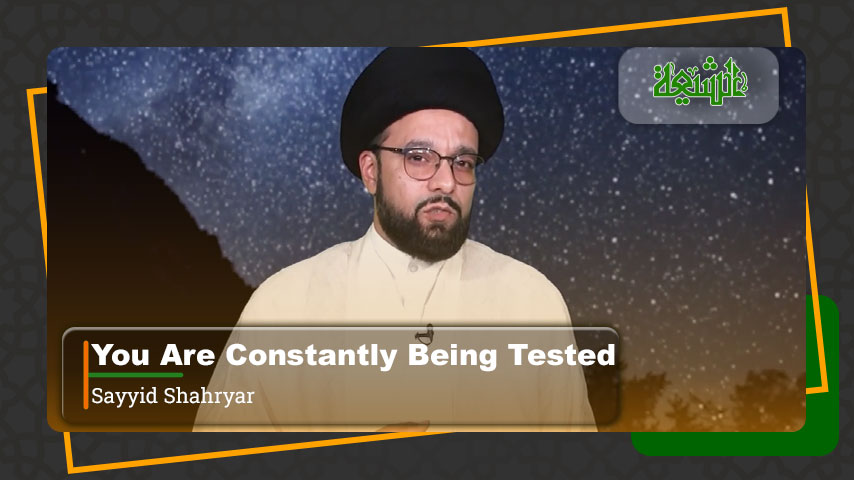The commemoration of the martyrdom of Imam Husain (PBUH) is one of the most profound expressions of collective memory and devotion in the Muslim world, particularly among Shia communities. Mourning Imam Husain goes far beyond ritual; it is a deeply spiritual and socially unifying act that has shaped Islamic identity for over thirteen centuries.
This study aims to examine the spiritual and social dimensions of mourning Imam Husain, highlighting how this practice serves as both a means of personal spiritual growth and a powerful tool for fostering communal identity, solidarity, and resistance against injustice.
Theological Foundations of Mourning the Dead
To establish the permissibility of mourning Imam Husain, it is pertinent to establish the theological foundation of mourning loved ones. After a thorough analysis of the Qur’anic reports and the practices of the noble Prophet of God and his companions, it is obvious that the act of weeping or mourning for death is not an innovation in religion; rather, it is an act supported by the Qur’an and the Prophetic Sunnah.
In the Qur’anic report, the story of Prophet Ya’qub (a.s) was mentioned, and he became blind out of continuous grief and sadness for the separation between him and his son, Yusuf (a.s). It is pertinent to note that Prophet Ya’qub knew quite well that Prophet Yusuf was alive, but despite this, he did not stop to grieve for losing him[1].
The Qur’an says: He said, ‘No, your souls have made a matter seem decorous to you. Yet patience is graceful. Maybe Allah will bring them all [back] to me. Indeed, He is the All-knowing, the All-wise.’ He turned away from them and said, ‘Alas for Joseph!’ His eyes had turned white with grief, and he choked with suppressed agony. They said, ‘By Allah! You will go on remembering Joseph until you wreck your health or perish.’ He said, ‘I complain of my anguish and grief only to Allah. I know from Allah what you do not know[2].’
In the interpretation of the verse, Qara’ati writes: “Weeping, sorrow, and grief over the loss of loved ones are permissible. …Weeping and sorrow do not contradict the suppression of anger and patience.”[3]
Then if a Prophet of God (Hazrat Ya’qub) despite having other eleven sons could weep, mourn and became grief continuously for forty years for missing just a son; Yusuf (i.e. the dearest son to him); then, what is the religious hindrance for weeping or mourning for the loved ones when they died?!
Apart from the Quranic verses, (PBUHH), there are several narrations in both the Sunni and Shia sources that establish that the noble Prophet (PBUHH) and some of his companions used to weep and grieve over the death of their loved ones. For instance:
- Death of Khadija and Abu Talib
The year the prophet’s wife, Khadijah, and his uncle, Abu-Talib, died was referred to by the prophet as the year of grief. The year 619 turned out to be a year of sorrow for Muhammad Mustafa in more than one sense. The death of one’s loved ones is naturally an occasion for sorrow. But in the case of Muhammad, the death of these two friends was not merely a subjective experience for him. He was soon made conscious of the meaning of their death by a series of extraneous events[4].
- Death of the Prophet’s Sons
It was reported that the Prophet (PBUHH) wept and mourned over the death of his sons, Ibrahim and Ṭahir. The Messenger of Allah (PBUHH) said: A child was born to me at night, and I named him after my (spiritual) father, Ibrahim. He then narrated the rest of the tradition. Anas said: I saw it at the point of death before the Messenger of Allah (PBUHH). Tears began to fall from the eyes of the Messenger of Allah (PBUHH). He said: The eye weeps and the heart grieves, but we say only what our Lord is pleased with, and we are grieved for you, Ibrahim[5].
In the book of Haythami, Majma’ al-Zawa’id, it was documented that the Prophet wept over the death of his son, Ṭahir, and he said: “The eyes shed tears, the tears overcome, the heart grieves, and we do not disobey God Almighty[6].”
- Death of the Prophet’s Uncle, Hamza
It was reported that when the uncle of the Prophet, Hamzah, was martyred in the battle of Uhud, he cried, and when he heard the Ansar women crying for their martyrs, he said: “But Hamza does not have anyone to mourn him!” Sa’d b. Mu’adh heard this and took women to the house of the Prophet (s), and they mourned for Hamza. Since then, any woman from the Ansar (The Helpers) who wanted to mourn for a deceased person would first mourn for Hamza[7].
It is pertinent to mention that based on the aforementioned verses and the practices of the noble Prophet of Allah, it is obvious to establish that mourning or weeping for a deed is a permissible practice in Islam.
NOTE:
However, the Hadiths used to present weeping over the dead are the Hadith reported by ‘Umar Ibn Khaṭṭab and Abdullah Ibn ‘Umar: ‘Abdullah b. ‘Umar reported that Hafsa wept for ‘Umar (when he was about to die). He (‘Umar) said: Be quiet, my daughter. Don’t you know that the Messenger of Allah (PBUHH) had said:” The deceased is punished because his family weeps over the death”?[8]
This Hadith, without any doubt, contradicts the verses of the Qur’an such as “No bearer of burdens shall bear another’s burden” and the noble practice (Sunnah) of the Holy Prophet and his companions. Similarly, if we are to accept the correctness of the Hadith, it was said on behalf of a dead Jew: “You are crying over him and he is going to be punished,” not a Muslim, as recorded in some relevant Sunni references.
It was documented thus: “The hadith is as narrated by Muslim in his Sahih with its chain of transmission on the authority of Aisha as follows: On the authority of Hisham ibn Urwa and from his father, he said: It was mentioned in the presence of Aisha the statement of Ibn Umar that the dead shall be tortured by the crying of his family over him, so she said: May God have mercy on Abu Abd al-Rahman, he heard something and did not memorize it. Dead of a Jew was carried in the presence of the Messenger of Allah, and they were crying over him, so he said: “You are crying while he is being punished[9].”
Mourning Imam Husain (PBUH)
After establishing the fact that mourning for loved ones is not in any way contradictory to the Qur’an, the Sunnah of the Prophet of Islam (PBUHH) and even the Sunnah of the Prophet’s companions, it is necessary to establish that weeping or mourning Imam Husain (PBUH) is a Sunnah, not an innovation (i.e. Bid’a).
First: If Prophet Ya’qub could cry or mourn until he became blind for missing just a single son (out of twelve sons), then what can prevent a lover of Prophet Muhammad (PBUHH) from mourning Imam Husain (PBUH) and his family members and companions?
Second: If weeping or mourning over our deceased ones is allowed, then what can prevent someone who calls himself a Muslim from weeping or mourning Imam Husain?
Third: There are reports in both Sunni and Shia references which show that the noble Prophet was aware of the martyrdom of Husain before this day. And he mourned over his martyrdom. It is documented that the noble Prophet (PBUHH) wept bitterly when he was informed by Jibril of the martyrdom of Husain[10]. Then, mourning over the martyrdom of Imam Husain is a Prophetic Sunnah.
Fourth: The custom of the Prophet’s household since the Ashura tragedy was to commemorate the commencement of Muharram till the tenth with grief. The Prophet’s household (Ahl al-Bayt) is a part of thaqalayn.
Spiritual Dimensions of Mourning Imam Husain
Mourning Imam Husain is more than grief; it is a spiritual act that deepens faith, purifies the soul, and renews one’s devotion to the values of Karbala.
- Mourning as an Act of Devotion and Love (Wilayah): Mourning of Imam Husain is not merely an emotional reaction to a tragic historical event; it is a profound expression of love, devotion, and loyalty (wilayah) to the Prophet Muhammad’s household (Ahl al-Bayt). In Shia Islam, mourning Imam Husain is seen as a form of spiritual allegiance that affirms one’s commitment to the values he upheld—truth, justice, and sacrifice. Through mourning him, believers renew their bond with divine leadership and demonstrate their spiritual alignment with the mission of Imam Husain (PBUH).
- Remembrance of Karbala as a Path to God-Consciousness (Taqwa): The remembrance of Karbala plays a vital role in nurturing Taqwa (God-consciousness) among believers, and mourning Imam Husain is a central vehicle for this spiritual awakening. Through mourning Imam Husain, individuals are reminded of the ultimate sacrifice made for the sake of divine truth and moral integrity. Thus, mourning Imam Husain becomes not only a ritual of remembrance but a transformative journey toward greater Taqwa and closeness to God.
Social Dimensions of Mourning Imam Husain
Mourning Imam Husain is not only a deeply spiritual act but also a powerful social force that unites communities around shared values of justice, sacrifice, and resistance.
- Mourning Imam Husain as a Tool for Collective Identity Formation: Mourning Imam Husain plays a pivotal role in shaping and reinforcing collective identity among Shia Muslim communities worldwide. Through shared rituals such as majlis, processions, and recitations, mourning Imam Husain becomes a unifying experience that transcends time, language, and geography. These communal acts of remembrance create a strong sense of belonging and continuity, linking individuals to a historical legacy of resistance, piety, and justice.
- The Role of Majlis and Public Rituals in Social Cohesion: Mourning Imam Husain through majlis and public rituals serves as a vital means of strengthening social cohesion within Shia communities. By mourning Imam Husain together, communities develop a shared emotional and religious experience that fosters unity, empathy, and mutual support.
Conclusion:
In conclusion, mourning Imam Husain is far more than a ritual of grief; it is a deeply rooted spiritual and social practice that continues to inspire the hearts of believers across the world. Spiritually, it nurtures a profound connection to God and the Ahl al-Bayt (PBUH), encouraging reflection, repentance, and steadfastness in faith. Socially, it unites communities, preserves religious identity, and fosters resilience in the face of injustice.
Notes
[1] . See: Faqih Imami, Sayyid Kamal et al (1997). An Enlightening Commentary into the Holy Qur’an, vol. 7, p. 536.
[2] . Qur’an 12. 83-86.
[3] . Qara’ati, Mohsen (2009). Tafsir-e Nūr, vol. 4, p. 268.
[4] . Sayyid Ali Asghar Razwy, Khadijatul Kubra: A Short story of Lady Khadijah’s life, p. 77.
[5] . Sunan Abi Dawud, Book 21, Hadith 38, Sunan Ibn Majah, Vol. 1, p. 482, Chapter: Weeping For The Deceased.
[6] . Haythami; Majma’ al-Zawa’id, vol 3, p. 8.
[7] . Haythami, Majma’ al-Zawa’id, vol 6, p. 120.
[8] . Sahih Muslim 927a Chapter 9: Book 11: The Book of Prayer – Funerals https://sunnah.com/muslim:927a
[9] . Sahih Muslim, vol 3, p. 44, Sahih Bukhari, vol. 2, p. 80; Sunan Nisa’i, vol. Vol. 4, p. 17; Sunan Bayhaqi, vol 4, p. 72, Muwatta Malik, vol. 1, p. 96.
[10] . Ibn Hanbal, Ahmad b. Muhammad (1995). Musnad al-Imam Ahmad b. Hanbal, vol.3, p. 60, Hadith 648; Ahmad Ibn Hambali, Fadail Sahabah, vol.1, p. 770, Hadith 1357; Ibn Kathir, Al-Bidayah Wa Nihayah, vol. 11, p. 570 and 571.
References
Holy Qur’an (Translator: Qara’i, Ali Quli. The Qur’an (With a Phrase-by-Phrase English Translation). 2nd ed. London: Islamic College for Advanced Studies (ICAS) Press, 2005.
Abu Dawoud, Sulayman b. Ash`ath (1999). Sunan Abi Dawoud (1st edition). Cairo: Dar al-Hadith.
Bukhāri, Muḥammad ibn Ismā`il (1989). Ṣaḥīḥ al-Bukhārī (2nd edition). Cairo: Egypt, Ministry of Endowment, High Council for Islamic Affairs, Sunni Books Revival Committee.
Faqih Imani, Sayyid Kamal et al (1997). An Enlightening Commentary into the Holy Qur’an. Translated by Sayyid Abbas Sadr-‘Ameli. 1st ed. Vol. 5. Isfahan: Iman Ali Library and Research Centre.
Ibn Hanbal, Ahmad b. Muhammad (1995). Musnad al-Imam Ahmad b. Hanbal (1st edition). Beirut: Mu’assasat al-Risalah.
Ibn Majah, Muhammad b. Yazid (1997). Sunan Ibn Majah (1st edition). Beirut: Dar al-Jeel.
Malik b. Anas (2004). Muwatta’ al-Imam Malik (1st edition). Abu Dhabi: Mu`assasah Zayid b. Sultan Al-i Nihyan lil-A`mal al-Khayriyyah wa al-Insaniyyah.
Nasa’i, Ahmad b. Ali (1990). al-Sunan al-Kubra (1st edition). Beirut: Dar al-Kutub al-‘Ilmiyyah, Manshourat Muhammad Ali Baydoun.
Qara’ati, Mohsen (2009). Tafsir-e Nūr. 1st ed. Tehran: Cultural Center for Teachings of the Qur’an.
Sayyid Ali Asghar Razwy (n.d). Khadijatul Kubra: A Short story of Lady Khadijah’s life. UK: Tahrike Tarsile Qur’an.


















